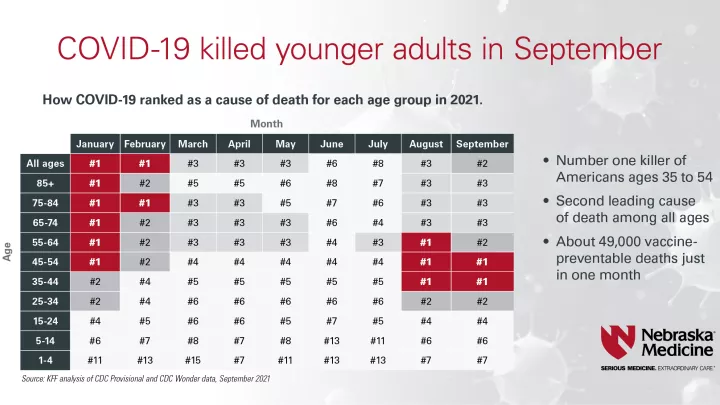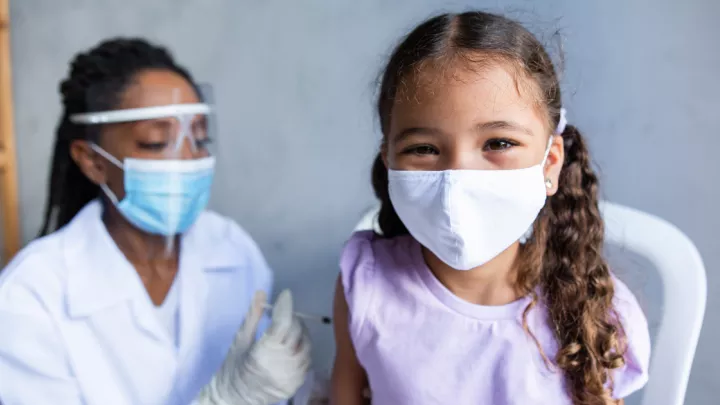You asked, we answered: Does VAERS list deaths caused by COVID-19 vaccines?

This blog was originally published May 13, 2021. The numbers cited were updated to be current as of Nov. 9, 2021.
Question:
Is it true that VAERS says 14,000 people have died from the COVID-19 vaccines?
Answered from infectious diseases expert James Lawler, MD, MPH:
No. Here's some context to explain the confusion.
After clinical trials, the Vaccine Adverse Event Reporting System (VAERS) is how the Centers for Disease Control and Prevention (CDC) monitors vaccine safety.
VAERS is set up to capture potential adverse events caused by vaccines. It is the best tool we have to find what may be previously unrecognized and extraordinarily rare adverse events that may eventually be linked.
VAERS cannot and does not determine whether a vaccine caused something. The CDC states this clearly in their disclaimer: "A report to VAERS does not mean that the vaccine caused the adverse event, only that the adverse event occurred some time after vaccination." The disclaimer continues, "The reports may contain information that is incomplete, inaccurate, coincidental or unverifiable."
Reporting even unrelated deaths
The Food and Drug Administration (FDA) requires health care providers to report any serious adverse event (including death) that happens after a COVID-19 vaccination – whether or not the provider thinks there is any link. The CDC says, "Health care providers are required to report to VAERS the following adverse events after COVID-19 vaccination…regardless if the reporter thinks the vaccine caused the AE." AE stands for adverse event and includes death.
That means that if a vaccinated person drowns, gets in a car crash or is struck by lightning, their death must be reported to VAERS as an adverse event. Since we've vaccinated over 223 million people in the United States, many deaths will occur coincidentally after vaccination.
As of Nov. 2, people have reported to VAERS 14,506 deaths that occurred sometime after COVID-19 vaccination. Doctors at the CDC review each reported death, looking at death certificates, autopsy and medical records. Additional CDC vaccine safety monitoring systems such as the National Healthcare Safety Network, Vaccine Safety Datalink, Clinical Immununization Safety Assessment Project and FDA's vaccine safety reporting systems are then used to provide more rigorous scientific investigation of potential adverse events. The true number of deaths currently attributed to COVID-19 vaccines in detailed scientific investigation is quite small.
False reports to VAERS
VAERS is like the Wikipedia of data reporting. Anyone can report anything. Many reports are helpful. Some reports are nonsense – to prove the point, one anesthesiologist successfully submitted a VAERS report several years ago that the flu vaccine had turned him into The Incredible Hulk. More recently, a false report of a 2-year-old dying from a COVID-19 vaccine was removed from VAERS because the CDC says it was "completely made up."
What about vaccine injury?
Vaccine adverse effects (also called vaccine injuries) can happen. Some people have experienced allergic reactions after getting a COVID-19 vaccine. The rate of anaphylaxis (severe allergic reaction) was less than 5 people per million vaccinated. Almost all of these severe allergic reactions happen within 30 minutes after vaccination. When you get your vaccine, you'll be asked to stay put for 15 to 30 minutes. That way, you can be given treatment in the rare chance you need it.
Remember when the Johnson & Johnson vaccine was paused temporarily? That was because our vaccine safety systems (including VAERS) were working as they should. Medical experts used the monitoring system to identify a trend of extremely rare blood clots after vaccination. How rare? As of Oct. 27, more than 15.5 million doses of Johnson & Johnson vaccines had been given in the United States. About 48 people have developed confirmed thrombosis with thrombocytopenia syndrome (TTS). Women younger than 50 should be aware of their increased risk of this rare adverse event. Two other COVID-19 vaccines – Pfizer and Moderna – have not shown a risk of TTS after vaccination.
If you recently received the Johnson & Johnson vaccine, please contact your doctor if you develop any of the following symptoms within three weeks of receiving your vaccine:
- Shortness of breath
- Chest pain
- Leg swelling
- Persistent abdominal pain
- Severe persistent headaches
- Blurred vision
- Easy bruising or tiny blood spots under the skin beyond the injection site
The bottom line
Over 223 million people in the United States have been vaccinated. We have lots of real-world evidence – in addition to clinical trial data – to indicate these vaccines are safe, and that adverse reactions to them are rare.






